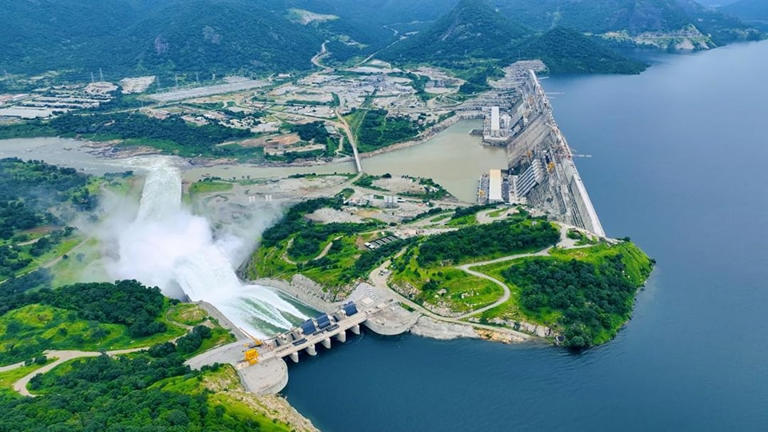Hydropower
POWERING AFRICA: 6,450-MW ETHIOPIAN DAM TO HARNESS NILE WATERS FOR ENERGY.
JUMA SULEIMAN

The Grand Ethiopian Renaissance Dam (GERD), strategically located on the Blue Nile, is poised to become Africa's largest hydroelectric facility and one of the top ten worldwide. With an anticipated output of 6,450 megawatts—three times the capacity of the Hoover Dam—GERD is set to transform Ethiopia into a significant energy exporter in the region. Estimated at approximately $5 billion, this monumental project promises to stimulate Ethiopia's economic growth, meet local energy demands, and enhance its political leverage over downstream nations. However, the dam has ignited considerable regional tension, primarily due to concerns regarding water security and the economic implications for Egypt and Sudan.
The construction of GERD has been a remarkable journey marked by extensive planning and engineering prowess. Initiated in 2011, the project features a roller-compacted concrete structure that rises 155 meters and spans 1,780 meters. The dam’s reservoir is designed to hold up to 74 billion cubic meters of water, significantly impacting the energy landscape of northeastern Africa. With advanced engineering techniques, including a sophisticated spillway system to manage flood risks, GERD stands as a testament to modern infrastructure development. Environmental monitoring programs have also been instituted to track the dam's ecological impact, underscoring the complexity of balancing development with environmental stewardship.
Geopolitical dynamics play a critical role in the narrative surrounding the GERD. The 2010 Cooperative Framework Agreement, signed by several East African nations, sought to redistribute water rights without Egypt's consent, which has historically held significant control over the Nile's waters. As the final country before the river flows into the Mediterranean, Egypt relies on the Nile for over 90% of its water supply. Consequently, any changes in water flow raise national security concerns for Egypt, which has been vocal about its apprehensions. Sudan, while eyeing potential benefits from increased hydropower, harbors fears over unregulated dam operations that could exacerbate flooding risks.
Looking ahead, the GERD presents both opportunities and challenges for regional stability. Ethiopia envisions the dam as a catalyst for economic integration, providing affordable electricity to combat power shortages across neighboring countries. However, the unresolved diplomatic standoff over water rights poses a critical obstacle, as Ethiopia's actions have challenged Egypt's historical dominance over the Nile. The success of GERD will depend significantly on Ethiopia's ability to navigate these complex relationships and establish a framework for cooperative water management, which is essential for long-term peace and stability in the region.
